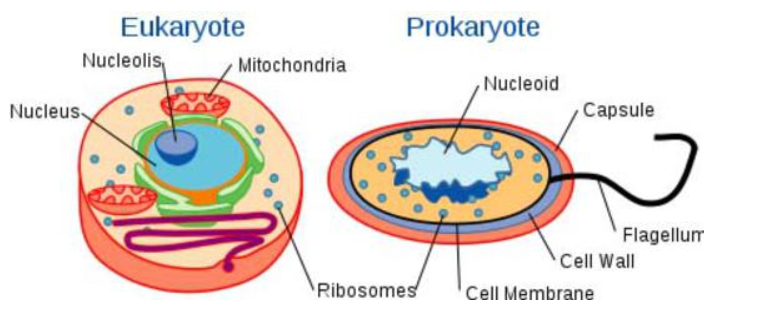Differences between eukaryotes and prokaryotes
Eukaryotes and prokaryotes
Bacteria are amongst the simplest of organisms – they are made of single cells. Their cell structure is simpler than the cells of animals, plants and fungi.
Cells of bacteria are called prokaryotic cells.
Cells of animals, plants and fungi are called eukaryotic cells

Comparing cell types
| Eukaryotic cell | Prokaryotic cell |
Size | Most are 5 μm – 100 μm | Most are 0.2 μm – 2.0 μm |
Outer layers of cell | Cell membrane - surrounded by cell wall in plants and fungi | Cell membrane - surrounded by cell wall |
Cell contents | Cytoplasm, cell organelles include mitochondria, chloroplasts in plants and ribosomes | Cytoplasm, ribosomes, no mitochondria or chloroplasts |
Genetic material | DNA in a nucleus - plasmids are found in a few simple eukaryotic organisms | DNA is a single molecule, found free in the cytoplasm - additional DNA is found on one or more rings called plasmids |
Type of cell division | Mitosis | Binary fission |
